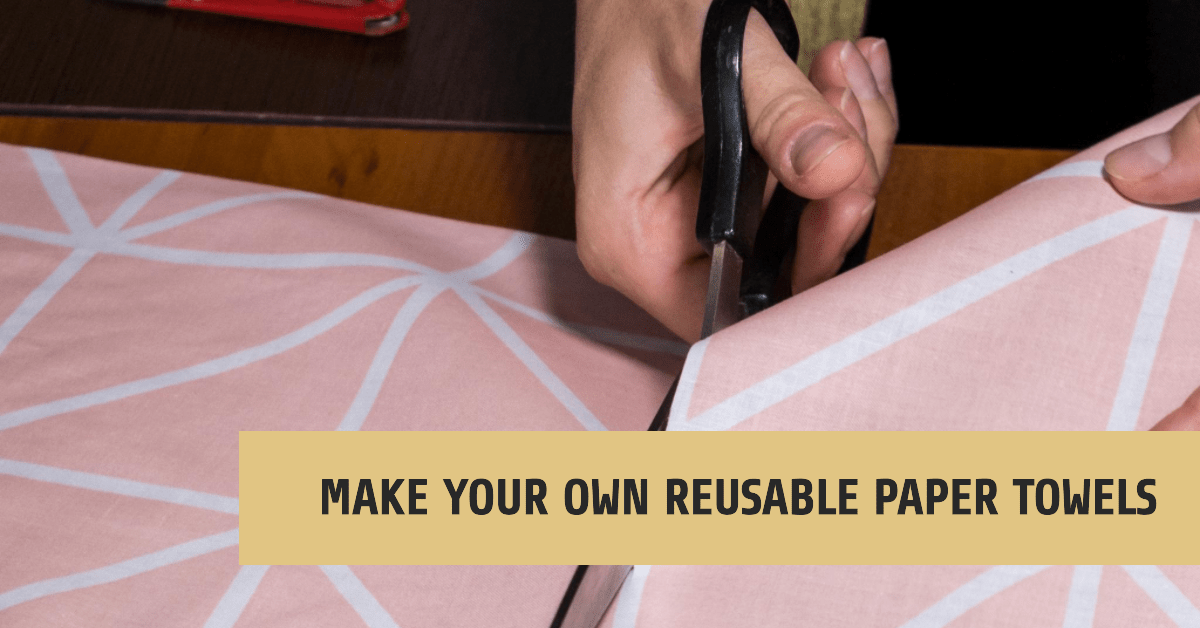Disposable paper towels may be convenient, but they generate immense waste and harm the environment. An eco-friendly alternative is to make reusable paper towels from cloth. With just basic sewing skills and materials, you can create your own reusable towels for a fraction of the cost of store-bought ones.
In this guide we will provide you detailed step-by-step instruction for making your own reusable paper towels at home.
Environmental Impact of Disposable Paper Towels
Paper towels that you use once and throw away are now found in most homes. But the convenience of these paper towels comes with some big downsides. To make them, trees have to be cut down which leads to deforestation and destroys natural habitats for animals.
They also take a lot of energy to produce and ship to stores, which increases their carbon footprint on the environment. Switching to reusable paper towels, which you can use more than once, is a greener choice and lets us make a good change in our everyday routines.
Materials Needed
To make your own reusable paper towels at home, you’ll need just a few supplies:
- Cotton fabric: 100% cotton works best, like old cotton t-shirts, cloth napkins, or cotton towels. Choose a lighter fabric weight that is absorbent.
- Sewing machine and thread: A sewing machine makes quick work of assembling the towels. Hand stitching with a needle and thread is also an option but will take more time.
- Scissors: Scissors make cutting the fabric to size quick and easy.
- Snaps or Velcro (optional): Adding snaps or Velcro allows you to secure the towels into a rolled shape for compact storage.

Step-by-Step Instructions
Follow these simple steps to sew your own reusable paper towels:
1. Choose Your Size
Decide on the size of your reusable towels. 11”x11” inches is a standard size, but feel free to adjust larger or smaller as needed. You’ll need two equally sized fabric pieces per towel.
2. Cut the Fabric
Measure and cut your fabric according to the size you chose in step 1. Remember, each towel requires two pieces of fabric.
3. Sew Them Together
Take two pieces and place them with the right sides facing each other. These will become the front and back of your towel.
Sew the fabric together along the edges, leaving a 2-3 inch opening along one side. This opening will allow you to turn the fabric right side out.

4. Flip and Finish
Turn the sewn fabric right side out through the opening. Push out the corners and edges. Iron flat if desired. Sew across the open gap to close it up and finish off your towel.
5. Add Closures (Optional)
To create a rolled-up look, attach Velcro or snaps at two opposite corners. This will allow you to fasten the towel into a neat cylinder shape.

Benefits of Reusable Paper Towels
Here are some of the best things about reducing paper towel waste with reusable towels:
- Saves money: After the initial fabric purchase, reusable towels are extremely cheap compared to buying new rolls of paper towels.
- Environmentally friendly: Reusable towels don’t end up in the trash or clogging up landfills like regular paper towels. Much better for the planet!
- Reduces waste: The average American family uses nearly 2 rolls of paper towels per week. That’s a lot of waste that reusable towels prevent.
- Multipurpose functionality: Reusable paper towels can replace paper towels for cleaning, drying hands, dusting, wiping up spills and more.
- Customizable: You can make them in any size or shape you want.
Cleaning and Care
Caring for your reusable paper towels is easy:
- Machine wash the towels in warm or cold water. Avoid hot water to prevent excessive shrinkage.
- Line dry or tumble dry on a low setting. High heat can cause shrinkage, so opt for air drying when possible.
- Avoid fabric softener to maximize absorbency.
- Replace towels once they become overly stained or worn.
Following these care instructions will help your reusable paper towels last longer and maintain their functionality.
Conclusion
In conclusion, making your own reusable paper towels is a simple and cost-effective way to reduce waste and contribute to a more sustainable environment. By using basic sewing skills and readily available materials, you can create towels that are not only practical but also customizable to your specific needs.
Making the switch to reusable paper towels not only saves money but also significantly reduces the environmental impact of disposable paper towels.
Frequently Asked Questions
Are reusable paper towels eco-friendly?
Yes, reusable paper towels are eco-friendly. Unlike disposable paper towels, they reduce waste and environmental impact. By using materials like cotton and adopting a DIY approach, you contribute to a more sustainable lifestyle.
How long do reusable paper towels last?
The lifespan of reusable paper towels depends on usage and care. With proper care, they can last up to 3 months. Replace them when they become overly stained or worn to ensure optimal functionality.
What is the best fabric to make reusable paper towels?
The best fabric for making reusable paper towels is 100% cotton. Choose lightweight, absorbent cotton materials such as old cotton t-shirts, cloth napkins, or cotton towels. This fabric type works well for various purposes and ensures effective absorbency.

